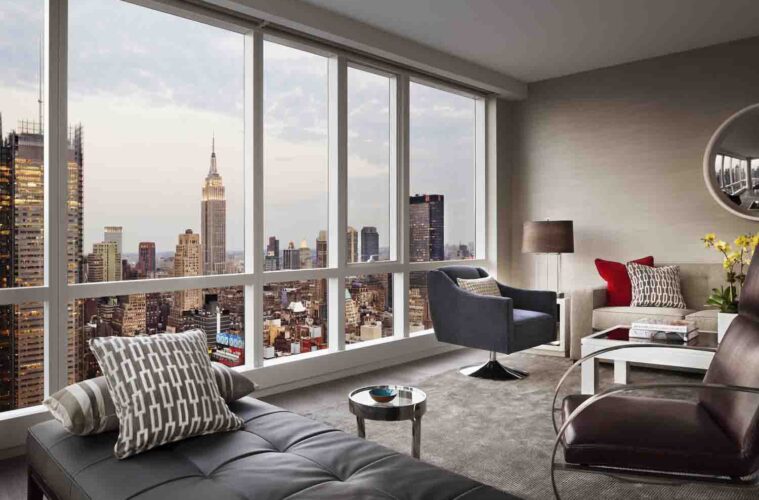Rent, or ‘rent’ as it’s called in New York, is one of the central themes of life in the city, as around two-thirds of the population are renters. Everyone has heard of the horrendously high rents in New York.
But how is it in reality? Does every New York tenant pay thousands of dollars a month? And how would that work, because the city doesn’t just consist of the rich and top earners? As with nearly everything New York-related, the reality of rents is more nuanced than the clichés.
I have divided the city into three priced ‘rooms’ for this article. This isn’t an exact science, just to reflect the fact that rents naturally vary by area.
Class A – Manhattan south of Harlem and the portions of Brooklyn and Queens that are just across the East River, in close proximity to Manhattan.
Class B – Harlem (a borough in northern Manhattan) and all of Manhattan north of it, as well as areas of Brooklyn and Queens that are moderately distant from Manhattan.
Class C – The Bronx and parts of Queens and Brooklyn far from Manhattan.
All figures quoted are for a one bedroom apartment – the most common type of apartment in New York like apartments for rent tribeca ny. A one bedroom apartment consists of a living room and a bedroom. Typical size is around 65 – 70 sqm. Sources for most of the numbers, especially market rent amounts, are Rentcafe and Yardi Matrix . They also coincide with what I personally experience.
Housing for Market Rent
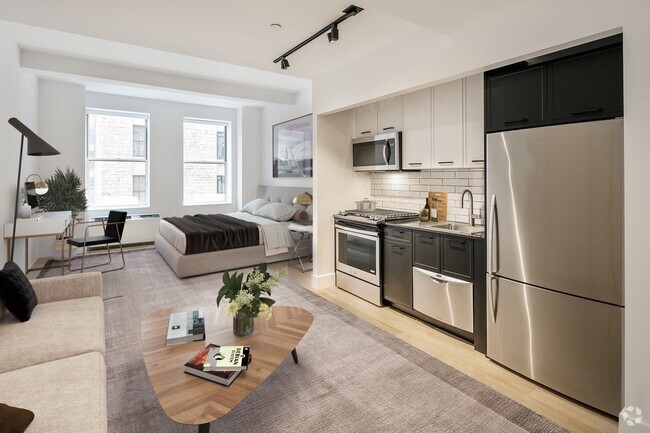
source: apartments.com
Someone is new to town and wants to rent a one bedroom. Market rent in A is between $3,500 and $4,000 dollars, in B between $2,000 and $3,000, and in C approximately between $1,500 and $2,000.
Apartments that are Subject to Rent Control
About one million of the approximately 2.5 million apartments in New York are subject to rent control. There are two kinds:
Rent Control
Put simply, people whose home is in a building built before 1947 and who have lived there since at least 1971 are protected by Rent Control. The rent can only be increased very slightly. I recently spoke to an old lady who occupies a rent controlled 3 bedroom apartment in a prime location on Manhattan’s Upper West Side for $450. The market value would be maybe $6,000.
That’s an extreme case, but as a ‘rent-controlled’ tenant you still pay an amount that other New Yorkers can only dream of. However, the ravages of time are gnawing at Rent Control. In the 1950s there were still 2 million, i.e. the vast majority of apartments where ‘rent-controlled’, today there are only around 30,000. For once such a dwelling becomes vacant, usually by death.
Rent Stabilization
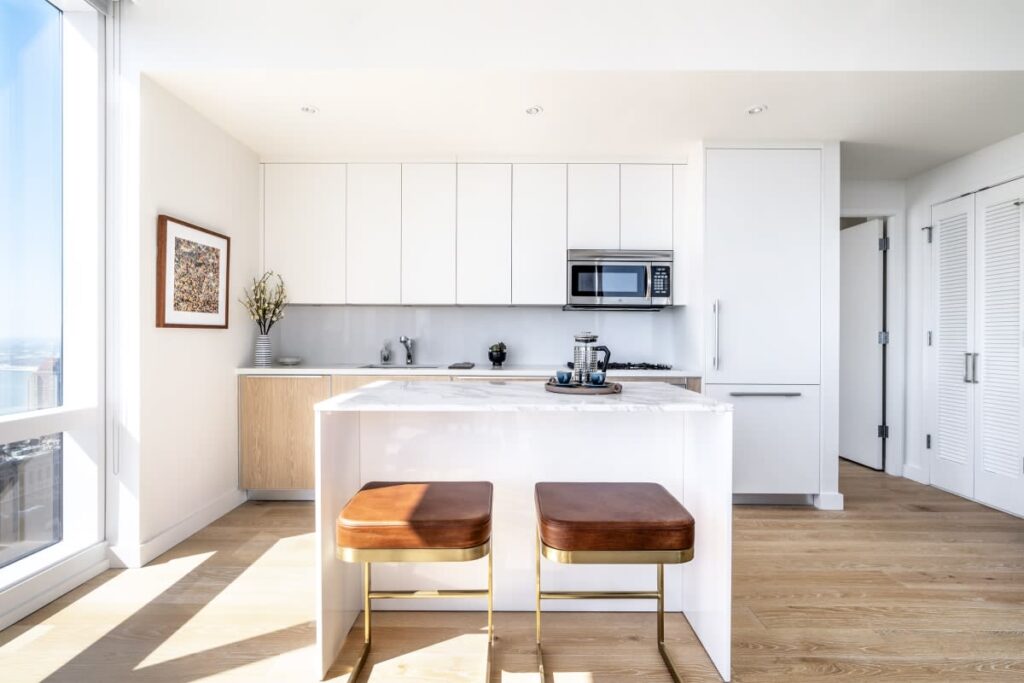
source: cloudinary.com
For buildings built before 1974 with more than 6 apartments, the annual rent can only be increased by a certain percentage. This is renegotiated every year, but is in the order of around 5%.
Because rents in New York have risen much faster in recent decades, the rent of someone who has lived in a rent-stabilized apartment for a long time is usually significantly lower than the market rent. This is especially true in areas that used to be cheaper and have since become hip neighborhoods, like the East Village or Lower Eastside neighborhoods of Manhattan.
If a tenant moves out of a ‘rent-stabilized’ apartment, the landlord may make an increase of 20%. Or even more if he refurbishes. This means that the rent moves closer to the market rent after each new lease and often even reaches it. Someone who stays in their apartment for a long time lives more cheaply.
Incidentally, there is very good tenant protection in New York, which in practice makes it almost impossible to terminate ‘rent-controlled’ or ‘rent-stabilised’ tenants.
Social Housing
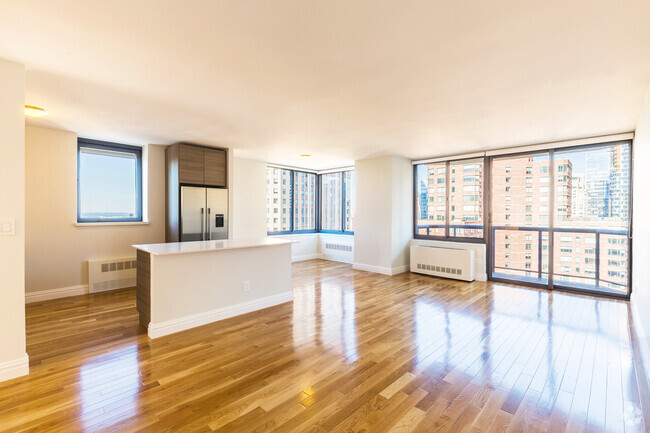
source: apartments.com
About 8% of all New York City apartments are public housing and house about 5% of the population. The operator of the vast majority of complexes, often huge, is the New York City Housing Authority (NYCHA). NYCHA is thus one of the largest, if not the largest, rental company in the world.
The apartments there are at least one bedroom, but most are larger as they are intended for families. According to NYCHA, the average rent in their apartments is $522. (By the way, there are public housing units that are in A neighborhoods that became top neighborhoods in the decades after they were built, like Chelsea in Manhattan or Long Island City in Queens. But most are in C neighborhoods).
Another 5% percent of New Yorkers don’t live in public housing but get their rent, or most of it, paid for by the state through Section 8.
Living alone – sharing an apartment – housing costs per capita
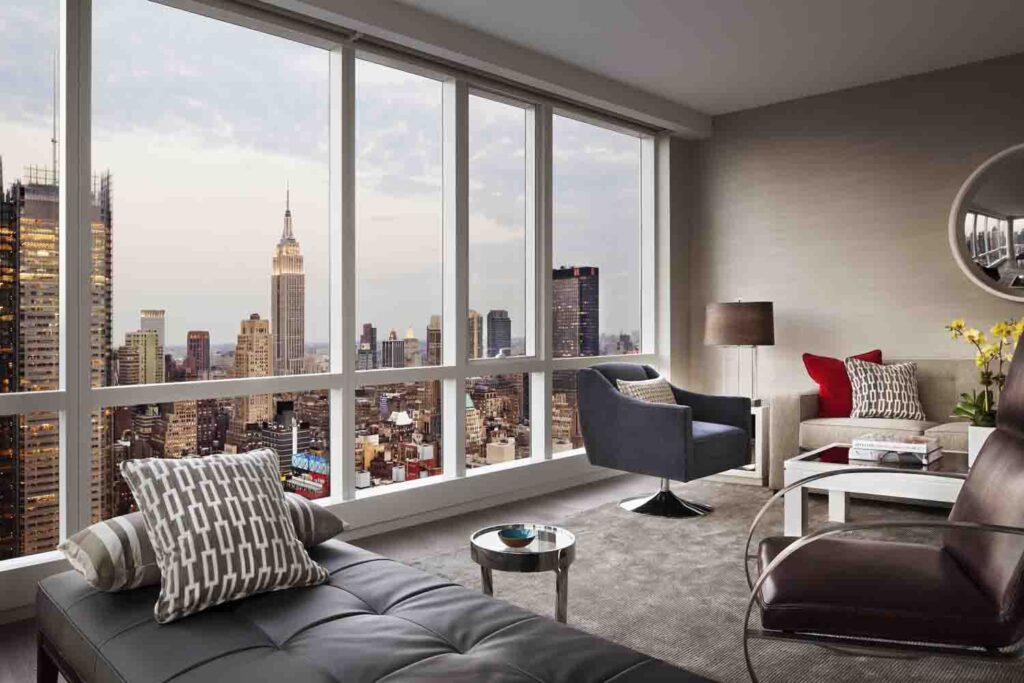
source: luxuryrentalsmanhattan.com
How you live – alone or with others – naturally also determines the rental costs to a large extent. Here are a few scenarios on how to find New York. Of course there are some more.
A-) Someone with the money moves to New York and wants to live alone in a one bedroom rental in an A area for $4,000. Housing cost per capita $4000.
B-) Two young people with decent jobs come to New York and want to live in an A area. They are willing to pay half or more of their income for rent. You can find something for $3,500. Housing cost per capita $1,750. There are some young people like that who want to live in New York for a few years and accept the high costs, but also want to live in an area where they can enjoy New York. They often stay for a few years and then move away again, especially when it comes to marriage and family.
C-) Someone has lived in a rent-stabilized apartment in a B area for 25 years and pays $1,400 for the apartment. He has a roommate. Per capita housing costs $700.
D-) Two low-income immigrants find the cheapest apartment on the market for rent in the Bronx or way out in Queens for $1,500. Per capita housing costs $750.
E-) A family with a father, mother and two children lives in NYCHA public housing and pays $600. Per capita housing costs for each adult $300 (here we assume a two bedroom apartment).

